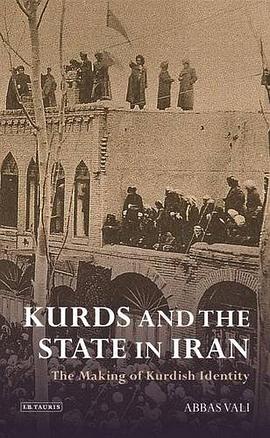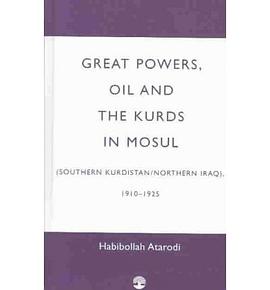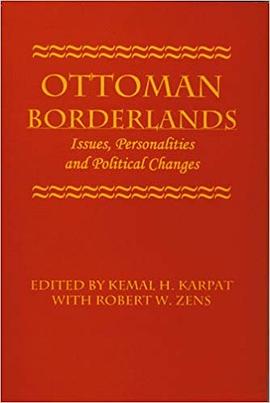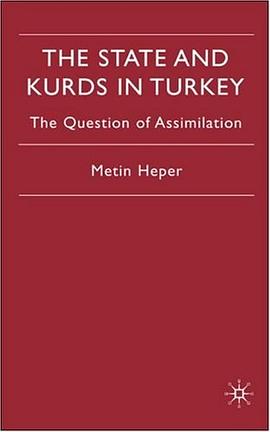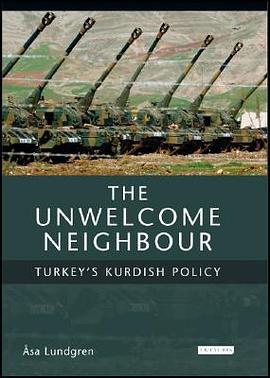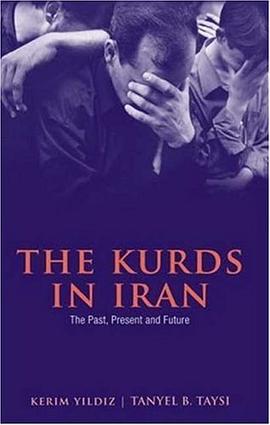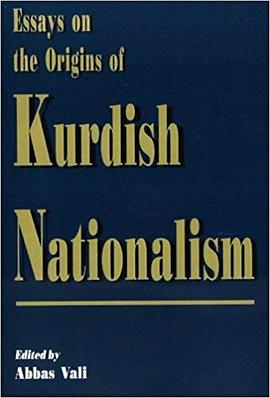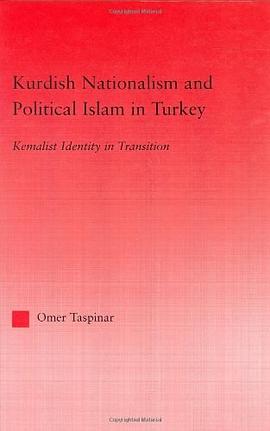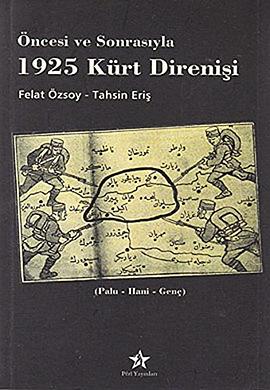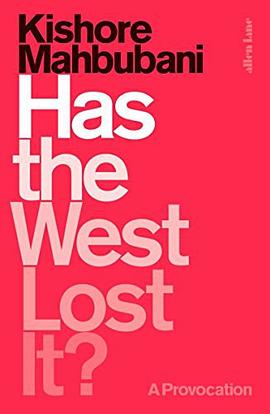

具體描述
These nine thousand pages of facsimile documents trace early insurgencies directed by the Kurdish people against regional and metropolitan powers, and their interrelations with neighbouring tribes and other ethnic groups at historical flash points, from the origins of nationalist sentiments through a series of disparate revolts in the nineteenth century, and then on to a larger, more cohesive and discernible nationalist movement launched in the aftermath of World War I. They concomitantly depict the extent of territories pertaining to the Kurdish 'homeland', the use of the term 'Kurdistan' generally refers to an agreed geographical area, not to a legal or political entity. Kurdish populated territory evolved over the nineteenth and twentieth centuries, with some regions becoming entrenched, others subject to constant flux. The map box provides illustrations of the changing territory, or those sections subject to alterations and contestation.
著者簡介
圖書目錄
- There were at least two major Kurdish revolts during this period, chiefly as a direct result of the Perso-Turkish War of 1828-29
- By 1838 British officials had begun referring to a “the Kurdish question” particularly in regards to free migration
- Further revolts occurred at Van, led by Bedr (or Pedr) Khan in 1846-47, leading to reprisals, including the arrest of numerous Beys over 1849-52
- Revolt at Jezirah at 1854
Volume 2 (1856-1878)
- Traces the impact of administrative changes set out by the Ottoman government and an increased international interest, which followed the Treaty of Paris 1856, in the Kurds and Kurdistan
- Swell in Kurdish activism with a significant revolt taking place in Van in 1856, with another being led by Bedr Khan in 1858-59
- Unrest accelerated from 1876, initially over the Kurdish resistance to conscription into the Ottoman army, and by 1878 parts of the region, notably around Kharput, were said to be verging on the state of anarchy
- Dersim Rebellion 1878-79
Volume 3 (1879-1899)
- A state of chaos prevailed in Van vilayet at the start of 1879. By August the Kurds of Hakkiari were in a state of open revolt with Shaikh Abeydullah as their leader
- While increased military activity and tensions on the Perso-Turkish border in 1881 caused hardship for and resentment among Kurds trying to cross the frontier, 100,000 Kurdish families nonetheless reportedly fled Persia for Turkish territory
- A state of turbulence continued from 1883-1887, leading to virtual autonomy in some regions, including Hekkiari. This was ended by an Ottoman expedition in 1890 with the specific aim of repressing the Kurds
- Intra-Kurdish quarrels broke out in 1894
Volume 4 (1900-1914)
- August 1905 Kurdish forces under the leadership of Ibrahim Pasha were at the gates of Diarbekir
- January 1905 they sent a petition appealing to HMG to be placed directly under British protection
- Young Turk Revolution of 1908
- Revolts at Moush in 1910, Khuyt in 1911, and under the leader Simko (who became active from 1913), all with the goal of seeking Kurdish autonomy from the Committee of Union and Progress
- Outbreak of World War One
Volume 5 (1914-1920)
- A special mission under Major E Noel was sent to approach Shaikh Mahmoud to represent British interests in Suleimaniya. Shaikh Mahmoud was initially made governor, albeit with limited powers, but by 1919 had turned on the British and had become the leader of a series of revolts.
- The Cabinet in November 1919 cited policy as being aimed at “setting up a ring of autonomous Kurdish states around the border of the Arab vilayet of Mosul”. In stark contrast to this, a policy was then adopted in January 1920 to not file a mandate for Kurdistan, while also not permitting its restoration to Turkey, nor supporting its partition. In addition, Lord Curzon at the San Remo conference of April 1920 had begun expressing doubts about the direction for Kurdistan
Volume 6 (1921-1926)
- The diplomatic failure of the Allies to sufficiently advance the provision for a Kurdish state set off a chain of revolts in areas of the former vilayet of Kurdistan beginning with Simko's campaign.
- Allied reversal of the agreement of 1923, reached at the Lausanne Conference, dashes the diplomatic creation of a Kurdish respecting the Kemalist government
- Turkish government overthrown by Mustafa Kemal Attaturk in 1923
- Major revolts continued to erupt, notably in 1925 in the form of the Shaikh Said rebellion, and again with the Dersim revolt in Turkey which led to martial law being declared.
- Retreat and exile of Simko to Iraq in late 1926
Volume 7 (1926-1929)
- By June 1927 one official was expressing the view that the Kurdish nationalist movement had reached a hiatus
- The attitude and policy of the Kemalist government was now impacting on the Kurds, the policy involved plans for mass deportations along with a campaign of repression of nationalist activities from July-December 1927
- Kurdish declaration of independence and establishing of the Republic of Ararat in 1927
- Evaluation undertaken of the consequences of the defeat in June 1929 of Iranian Kurds in the attempted Mangur Revolt
Volume 8 (1930-1939)
- Volume includes a significant British review of policy and promises made to Kurds which were undertaken in the context of Anglo-Iraqi cooperation in August 1930
- Mass meetings of Kurds and plans for a major anti-Arab revolt in Iraq, 1931.
- The Khoybun Revolt took place over the period 1929-31, leading to attempts to define the boundaries of Kurdistan in 1931-32
- Forced migration during the period 1939-1945, in which one estimate claims 700,000 Kurds died
Volume 9 (1941-1944)
- Covers the World War 2 period in which both Iran and Iraq were effectively under Allied occupation
- A Kurdish revolt occurred in Persia in December 1941, supported by Assyrian and Chaldean factions, leading to full military engagement with Iranian forces, and ultimately a Kurdish defeat in January 1942.
- Continued disturbances in western Iran January 1942, notably the Kurdish advanced on Rezaieh in western Azerbaijan
- Unrest among Kurds in the autumn of 1942 led to Iranian military operations and surveillance in northern Kurdistan.
- Various incidents involving Kurds, such as an attack on Mazlu village, suggested they would not undertake attacks if Russians offered any resistance. The frontier situation from August 1943 points to a lack of control, allowing for subsequent incursions and cross-border raids by Kurds
Volume 10 (1945-1950)
- From 1945, the Iraqi Kurdish situation had become focused on the activities of Mullah Mustapha. A report from Capt. Stokes, the Political Adviser at Erbil, referred to “the confederacy of Barzan” as an “autonomous Kurdistan” established by Mullah Mustafa
- Tours of the region by British officials in late 1945, aimed at assess the interaction between local officials and Mullah Mustafa.
- This period also saw the formation of political protest parties, the ”Kurdish Democratic Party” dates from 1946 for example.
- Temporary creation of “The autonomous Republic of Azerbaijan” in the western Azerbaijan area of Mahabad, 1946. Mahabad continued to be a focal point the nationalist movement, at least until 1949.
Volume 11 (1951-1965)
- Barzan revolt of 1954
- The Shah launches an attack against the Juamri Kurds 1956
- Iraq coup of 1958
- Decision was made by many Iraqi Kurds in February 1963 start a revolt under leadership of Mullah Barzani
- Iranian assistance was offered to Iraqi Kurds in 1963
- Negotiations in 1964 for a ceasefire among the Iraqi Kurds proved unfruitful and gave way to renewed fighting in 1965.
Volume 12 (1966-1979).
- The period begins with a strategic conference in Iraq which planned to remove Kurds from all oil-bearing areas in 1966, this was at a time when HMG had effectively declared neutrality on the (Iraq) Kurdish question
- Mustafa al Barzani delivered a list of demands to the Iraq government in April 1966
- Coup d’etat in Iraq in 1968
- Over 400,000 Kurds were expelled by the government of Iraq over 1970-76, despite the terms of the 1970 “settlement” negotiated with the Government and accepted by Mullah Mustapha.
- Growing tensions between Kurds and government of Iraq were evident in 1973, and an ultimatum was given to the KDP by Saddam Hussein in March 1974
- Iraqi Kurdish refugees in Iran and their forcible re-settlement from 1976-1977 affected wider relations between Britain, Iran and Iraq
- The Pahlevi regime in February 1979, labelled the KDP as “counter-revolutionary” following the setting up of KDP HQ at Mahabad - their first revolt since 1949
· · · · · · (收起)
讀後感
評分
評分
評分
評分
用戶評價
讀瞭一捲多。這應該是與庫爾德問題相關的最重要的英語材料之一(當然裏麵也有法語和Sorani材料)。內容當然是豐富而重要。不過編輯工作一般,純粹是掃圖,沒有進行手寫部分的錄入,沒有Sorani的翻譯,也沒有任何注釋和背景介紹,使用體驗一般。還是Foreign Relations of the United States對研究者更友好啊......
评分讀瞭一捲多。這應該是與庫爾德問題相關的最重要的英語材料之一(當然裏麵也有法語和Sorani材料)。內容當然是豐富而重要。不過編輯工作一般,純粹是掃圖,沒有進行手寫部分的錄入,沒有Sorani的翻譯,也沒有任何注釋和背景介紹,使用體驗一般。還是Foreign Relations of the United States對研究者更友好啊......
评分讀瞭一捲多。這應該是與庫爾德問題相關的最重要的英語材料之一(當然裏麵也有法語和Sorani材料)。內容當然是豐富而重要。不過編輯工作一般,純粹是掃圖,沒有進行手寫部分的錄入,沒有Sorani的翻譯,也沒有任何注釋和背景介紹,使用體驗一般。還是Foreign Relations of the United States對研究者更友好啊......
评分讀瞭一捲多。這應該是與庫爾德問題相關的最重要的英語材料之一(當然裏麵也有法語和Sorani材料)。內容當然是豐富而重要。不過編輯工作一般,純粹是掃圖,沒有進行手寫部分的錄入,沒有Sorani的翻譯,也沒有任何注釋和背景介紹,使用體驗一般。還是Foreign Relations of the United States對研究者更友好啊......
评分讀瞭一捲多。這應該是與庫爾德問題相關的最重要的英語材料之一(當然裏麵也有法語和Sorani材料)。內容當然是豐富而重要。不過編輯工作一般,純粹是掃圖,沒有進行手寫部分的錄入,沒有Sorani的翻譯,也沒有任何注釋和背景介紹,使用體驗一般。還是Foreign Relations of the United States對研究者更友好啊......
相關圖書
本站所有內容均為互聯網搜索引擎提供的公開搜索信息,本站不存儲任何數據與內容,任何內容與數據均與本站無關,如有需要請聯繫相關搜索引擎包括但不限於百度,google,bing,sogou 等
© 2025 book.quotespace.org All Rights Reserved. 小美書屋 版权所有




